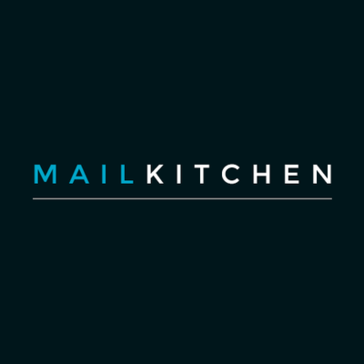4.50
MailKitchen Review
Read our in-depth MailKitchen review! Explore its features, pricing, and security. See if its updates, support, and value for money fit your needs!

Introduction to MailKitchen
Looking for an efficient and cost-effective email marketing solution? This MailKitchen review will provide you with an in-depth look at this platform and help you decide if it's the right fit for your needs. We'll cover everything from understanding MailKitchen basics to exploring its key features and functionalities.
MailKitchen offers a range of tools designed to simplify your email marketing efforts. From getting started with MailKitchen with intuitive drag-and-drop editor to advanced features like automation and segmentation, this platform caters to both beginners and experienced marketers. Let's delve into the benefits of MailKitchen and see how it can help you achieve your email marketing goals.
Comprehensive overview and target audience
Comprehensive overview of MailKitchen and target audience
MailKitchen is designed as an accessible email marketing platform, catering especially to small businesses and entrepreneurs seeking efficient campaign management. Its intuitive interface makes it user-friendly, reducing the learning curve typically associated with more complex email marketing solutions. Users often find MailKitchen value for money; particularly attractive is its generous free plan, which allows businesses to get started without an initial financial commitment.
The target audience spans various sectors. Start-ups, e-commerce businesses, non-profit organizations, and individual marketers all find utility in MailKitchen’s features. It suits those who need to send newsletters, promotional emails, or transactional messages without requiring advanced automation or sophisticated segmentation capabilities.
MailKitchen updates and new features are regularly implemented to enhance platform functionality and respond to user feedback. This commitment to improvement helps ensure that MailKitchen remains a competitive option in the constantly evolving email marketing landscape. While not always boasting cutting-edge innovations, these updates typically focus on improving usability and addressing common user pain points.
A significant consideration for any email marketing platform is security. MailKitchen security features include data encryption, compliance with GDPR regulations, and robust measures to prevent spam and protect user data. This is crucial for maintaining user trust and ensuring deliverability.
When evaluating options, MailKitchen pricing comparison reveals that it stands out as a cost-effective choice, especially for businesses with limited budgets. While it may lack some of the advanced features found in premium platforms, its free plan and competitive paid plans make it a compelling alternative for budget-conscious users.
For users needing assistance, MailKitchen support and training resources are available. These resources typically include a comprehensive knowledge base, tutorials, and responsive customer support channels. While support may not be available 24/7, the provided materials often address common questions and guide users through platform functionalities. This commitment to user support further enhances MailKitchen’s accessibility and makes it a suitable choice for those new to email marketing.
User experience and functional capabilities
User experience and functional capabilities
MailKitchen user experience insights reveal a platform designed for ease of use, especially for those new to email marketing. The drag-and-drop editor simplifies campaign creation, allowing users to quickly design visually appealing emails without requiring coding knowledge. Navigating the interface is generally straightforward, but some users may initially find certain features tucked away in less obvious locations. Overall, the platform prioritizes accessibility, making it a viable option for small businesses with limited technical expertise.
How to use MailKitchen effectively involves understanding its core functionalities. Campaign creation, list management, and basic reporting are relatively simple. More advanced features like segmentation and automation require a deeper understanding of the platform’s capabilities. MailKitchen implementation guide includes step-by-step instructions and video tutorials to help users navigate these features. Spending time exploring these resources can significantly improve campaign effectiveness.
Integrating MailKitchen with other tools can sometimes present challenges. While MailKitchen offers some integrations with popular CRM and e-commerce platforms, the options are not as extensive as those available with more established email marketing solutions. Users should carefully evaluate the available integrations to ensure compatibility with their existing tech stack. The ability to import and export data via CSV files provides a workaround for connecting with systems that lack native integration.
MailKitchen updates and new features are rolled out periodically, often addressing user feedback and enhancing platform functionality. These updates typically focus on improving usability, adding new templates, and refining existing features. Staying informed about these updates can help users leverage the latest improvements and optimize their campaigns. Release notes are usually available on the MailKitchen website and through their support channels.
Like any software, MailKitchen isn’t without its drawbacks. Common problems with MailKitchen include occasional deliverability issues, limitations in template customization, and a lack of advanced reporting features. Some users have also reported delays in customer support response times. While these issues are not universal, it’s important to be aware of them when evaluating the platform. The community forums and knowledge base can be valuable resources for troubleshooting common problems.
Best practices for using MailKitchen include segmenting your audience, personalizing your messages, and regularly testing your campaigns. A/B testing different subject lines and email content can help optimize open rates and click-through rates. Monitoring your sender reputation and following email marketing best practices are crucial for ensuring deliverability and avoiding spam filters.
Who should be using MailKitchen
Who should be using MailKitchen
MailKitchen is particularly well-suited for small to medium-sized businesses (SMBs) and entrepreneurs who are looking for a user-friendly and cost-effective email marketing solution. Its intuitive interface and drag-and-drop editor make it accessible to users with limited technical expertise, allowing them to quickly create and send professional-looking email campaigns without needing to code. Non-profit organizations and individual marketers on a budget can also benefit from MailKitchen’s generous free plan and competitive pricing structure.
A typical MailKitchen use case scenario involves a small e-commerce business that needs to send out weekly newsletters to its customer base, promoting new products and special offers. MailKitchen allows them to easily create visually appealing emails, segment their audience based on past purchases, and track key metrics like open rates and click-through rates. Similarly, a startup can use MailKitchen to announce new features to early adopters. MailKitchen can assist in automating welcome emails for new subscribers, nurturing leads, and driving sales.
However, businesses requiring advanced features like sophisticated automation workflows, complex segmentation options, or in-depth reporting may find MailKitchen somewhat limited. While MailKitchen provides basic segmentation and automation capabilities, it may not be sufficient for companies with more complex email marketing needs.
To maximize the effectiveness of the platform, adherence to best practices for MailKitchen is crucial. This involves segmenting your audience to send more targeted messages, personalizing your email content to increase engagement, and regularly A/B testing different subject lines and email designs to optimize your campaigns. Monitoring your sender reputation and following email marketing best practices will help ensure deliverability and avoid spam filters. By following these tips, users can get the most out of MailKitchen and achieve their email marketing goals.
Unique Features offered by MailKitchen
Customization options and Unique Features offered by MailKitchen
MailKitchen provides several customization options that enhance its usability and effectiveness. Users can tailor email templates to match their brand identity by adjusting colors, fonts, and layouts. The drag-and-drop editor simplifies this process, enabling even those without coding experience to create visually appealing and on-brand emails. Images and logos can be easily integrated, further personalizing the communication. These customization features are vital for maintaining a consistent brand presence across all email marketing efforts and are key for customizing MailKitchen for business growth.
Unique features of MailKitchen include its focus on simplicity and ease of use, which sets it apart from more complex email marketing platforms. The platform offers a generous free plan, allowing businesses to send a significant number of emails each month without any cost. This makes it an attractive option for startups and small businesses with limited budgets. Segmentation options, while not as advanced as those in premium platforms, allow users to target specific segments of their audience based on demographics or behavior.
MailKitchen for small businesses also offers some degree of automation. Automated welcome emails can be set up to greet new subscribers, and automated follow-up sequences can be created to nurture leads. While the automation features may not be as robust as those found in enterprise-level solutions, they are sufficient for the needs of many small businesses. The reporting tools provide insights into key metrics such as open rates, click-through rates, and bounce rates, helping users to track the performance of their campaigns and make data-driven decisions.
Integrating MailKitchen with other tools can be achieved through available integrations and API access. While the range of native integrations may be limited compared to larger platforms, MailKitchen supports integrations with popular CRM and e-commerce systems. The ability to import and export data via CSV files also allows users to connect MailKitchen with other tools that lack direct integration. Users should assess their integration needs to ensure MailKitchen is compatible with their existing tech stack.
Pain points that MailKitchen will help you solve
MailKitchen addresses several key pain points commonly experienced by businesses engaging in email marketing. Many small businesses struggle with the complexity and cost associated with larger, more feature-rich platforms. MailKitchen simplifies the process with its intuitive drag-and-drop editor and affordable pricing, even offering a generous free plan. This makes email marketing accessible to those with limited budgets or technical expertise, facilitating effective communication without overwhelming complexity.
Another pain point MailKitchen alleviates is the difficulty in creating visually appealing and professional emails. The platform offers customizable templates that can be easily adapted to match your brand identity. Customizing MailKitchen for business growth is streamlined by the platform’s user-friendly design tools. It provides the capacity to design engaging campaigns without requiring advanced design skills. The ease of use empowers businesses to maintain a consistent brand image in their email communications.
Furthermore, MailKitchen helps businesses overcome the challenge of managing subscriber lists and segmenting their audience. While its segmentation capabilities may not be as advanced as those of enterprise-level solutions, they are sufficient for targeting specific groups of subscribers with personalized messages. This targeted approach improves engagement and reduces the risk of sending irrelevant emails that can lead to unsubscribes.
MailKitchen for different business sizes addresses scalability concerns by providing flexible plans that can accommodate growing needs. Whether you are a solopreneur sending a few hundred emails per month or a larger business sending thousands, MailKitchen offers options to suit your requirements. The platform can grow alongside your business, ensuring you have the tools you need without paying for unnecessary features.
Integrating MailKitchen with other tools can streamline workflows and improve efficiency. While the range of native integrations may be limited compared to some competitors, MailKitchen supports integrations with popular CRM and e-commerce platforms. The ability to import and export data via CSV files allows for seamless data transfer between MailKitchen and other systems. It helps in centralizing data. This connectivity enhances overall marketing effectiveness and reduces manual effort.
Scalability for business growth
Scalability for business growth
MailKitchen offers scalability that adapts to evolving business needs. As your subscriber base expands and your email marketing efforts become more sophisticated, MailKitchen’s flexible plans allow you to upgrade your resources without disrupting your campaigns. This ensures that you can continue to reach your audience effectively as your business grows.
The platform’s scalability extends beyond just the number of emails you can send. It also encompasses the features and functionalities available to you. As you upgrade to higher-tier plans, you unlock access to more advanced segmentation options, automation workflows, and reporting tools. This allows you to refine your email marketing strategy and optimize your campaigns for better results.
Customizing MailKitchen for business growth involves leveraging these scalable features to meet your specific needs. For example, as your customer base grows, you can use advanced segmentation to target different customer segments with personalized messages, increasing engagement and driving conversions. Similarly, you can use automation to streamline your email marketing processes, freeing up time to focus on other aspects of your business.
MailKitchen for different business sizes addresses scalability concerns by providing flexible plans that can accommodate a range of needs. Whether you are a solopreneur or a growing business, MailKitchen offers options to suit your requirements. Customizing MailKitchen for business scalability ensures that you can adapt the platform to support your evolving email marketing strategy. This includes options like increasing sending limits and enhancing automation capabilities as your business expands.
While MailKitchen may not offer the same level of scalability as some enterprise-level solutions, it provides a cost-effective and user-friendly option for businesses that are looking to grow their email marketing efforts without breaking the bank. Its flexible plans and customizable features make it a viable choice for businesses of all sizes.
Final Verdict about MailKitchen
After a comprehensive examination of MailKitchen, considering its ease of use, target audience, customization options, pain points, and scalability, here is the final verdict on MailKitchen. For small businesses and entrepreneurs seeking a straightforward and affordable email marketing solution, MailKitchen presents a compelling option. Its intuitive interface and drag-and-drop editor significantly lower the barrier to entry, enabling users to create and send professional-looking emails without extensive technical skills.
However, it’s crucial to acknowledge the platform’s limitations. Businesses requiring advanced automation, intricate segmentation, or in-depth analytics may find MailKitchen lacking in these areas. The integrations are not as extensive as those offered by some competitors, potentially posing challenges for users with complex tech stacks. Deliverability issues and occasional support delays also warrant consideration.
The generous free plan is a significant advantage, allowing businesses to explore the platform’s capabilities without financial commitment. This makes MailKitchen particularly attractive for startups and organizations with limited budgets. As your business grows, MailKitchen’s scalable plans provide options to upgrade resources and unlock additional features.
Ultimately, the final verdict on MailKitchen hinges on your specific needs and priorities. If simplicity, affordability, and ease of use are paramount, MailKitchen is definitely worth considering. However, if your email marketing strategy demands advanced functionality and robust integrations, exploring alternative platforms may be necessary. MailKitchen excels as an entry-level solution, providing a solid foundation for businesses to build their email marketing presence.
Advantage
Disadvantage
Affordable pricing plans for various business sizes
User-friendly interface, easy to navigate and use
Automation features save time and improve efficiency
Good deliverability rates ensures emails reach inboxes
Solid reporting and analytics track campaign performance
Disadvantage
Steep learning curve for advanced features
Limited integrations with other platforms
Reporting features could offer more detail
Price can be high for large lists
Customer support response times can vary.
Rating
Web Based
Windows
Mac OS
Linux
Android
iOS
Phone Support
Email/Help Desk
AI Chat Bot
Live Support
24/7 Support
Forum & Community
Knowledge Base
Live Online
Documentation
Videos
In Person
Webinars
Company: Here's the contact information for MailKitchen, separated by vertical columns: MailKitchenHere's the contact information for MailKitchen, separated by vertical columns: MailKitchen
Email: contact@mailkitchen.comcontact@mailkitchen.com
Address:
10, rue de Penthièvre 75008 Paris France10, rue de Penthièvre 75008 Paris FrancePhone: +33 1 44 90 70 90+33 1 44 90 70 90
Implementation
Web Based
Windows
Mac OS
Linux
Android
iOS
Support
Phone Support
Email/Help Desk
AI Chat Bot
Live Support
24/7 Support
Forum & Community
Knowledge Base
Training
Live Online
Documentation
Videos
In Person
Webinars
Group text
Company: Here's the contact information for MailKitchen, separated by vertical columns: MailKitchenHere's the contact information for MailKitchen, separated by vertical columns: MailKitchen
Email: contact@mailkitchen.comcontact@mailkitchen.com
Address:
10, rue de Penthièvre 75008 Paris France10, rue de Penthièvre 75008 Paris France
Phone: +33 1 44 90 70 90+33 1 44 90 70 90
Alternative Products
Web Based
Documentation, Videos, Webinars
Email/Help Desk, Knowledge Base
Frequently Asked Questions
Is MailKitchen worth it?
MailKitchen is a solid choice if you’re on a very tight budget and need basic email marketing functionality. It offers a decent free plan, but its feature set is limited compared to competitors.
How can MailKitchen help me?
MailKitchen helps you send email newsletters and marketing campaigns to your subscribers. It allows you to manage your contact list, design emails, and track your campaign performance. It’s primarily aimed at users who need a simple, straightforward email marketing solution without a lot of bells and whistles.
What are the key features of MailKitchen?
Key features include email campaign creation and scheduling, contact list management and segmentation, basic email template design, campaign performance tracking (opens, clicks, bounces), and autoresponder functionality for automated emails. It supports GDPR compliance through features like double opt-in.
What are MailKitchen's pricing plans?
MailKitchen offers a free plan and paid plans based on the number of emails sent. The free plan has limitations on sending volume and may include MailKitchen branding. Paid plans unlock higher sending limits and remove branding.
Is there a free plan or trial available for MailKitchen?
Yes, there is a free plan available, making it a good option for very small businesses or individuals starting out. The exact limitations vary, so it’s important to check their website for the current details.
What kind of customer support does MailKitchen offer?
Customer support options are generally limited, especially for free plan users. Paid plans typically offer email support and potentially access to a knowledge base or help center.
How does MailKitchen compare to other email marketing platforms?
MailKitchen offers a more basic feature set compared to platforms like Mailchimp, Sendinblue, or ConvertKit. It often falls short in advanced automation, segmentation, integrations, and design options. However, its simplicity and free plan make it appealing to those with minimal needs. If you need advanced features or integrations, consider other platforms.
Is MailKitchen easy to use, especially for beginners?
MailKitchen is generally considered easy to use, particularly for beginners. The interface is uncluttered and straightforward, making it simple to create and send basic email campaigns. However, its simplicity also means a lack of advanced customization options.






